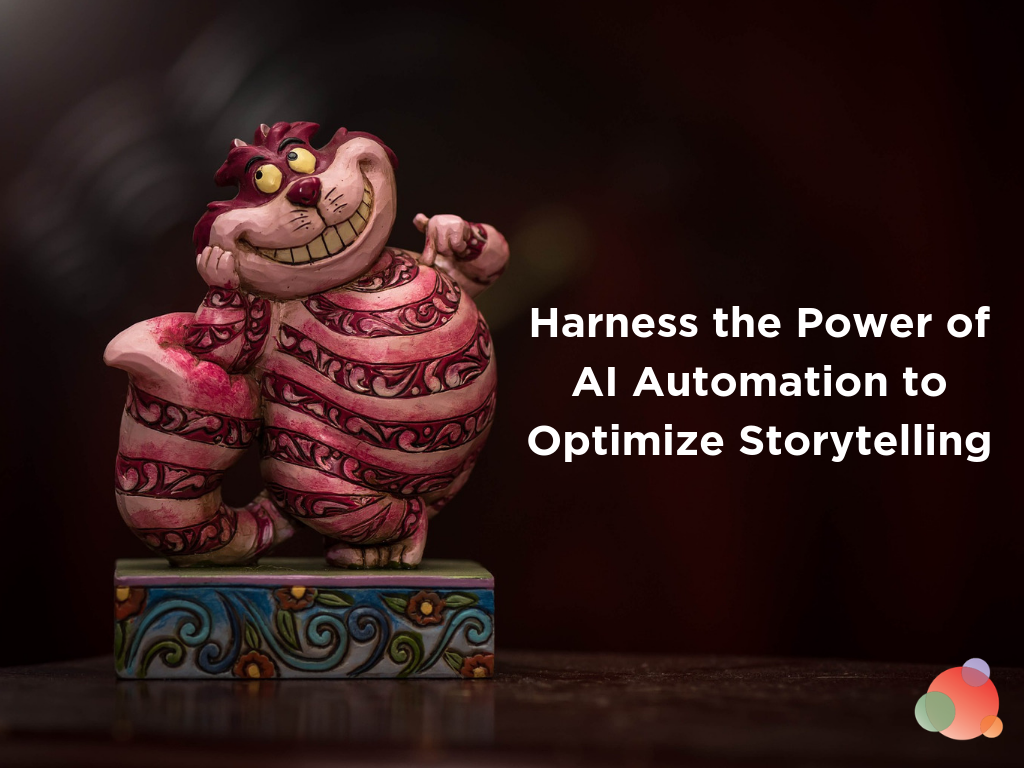 Many agencies are still in the early stages of collecting data, and learning how to use it to drive value through AI automation.
Many agencies are still in the early stages of collecting data, and learning how to use it to drive value through AI automation.
Yet, a 2018 study found 49% percent of those surveyed agreed artificial intelligence (AI) and automation will change the way we work.
And 31% believed they’d already seen the benefits.
But organizations are also dealing with the fear that AI and automation could cause job loss across many sectors.
Technology advances will undoubtedly alter current roles, as well as create new ones.
For instance, communicators could soon use natural language generation (NLG) in our storytelling.
Natural language generation is a type of artificial intelligence that turns data into clear, human-sounding narratives.
Because at our core, humans are storytellers.
We relate to, understand, communicate, and connect through stories.
This new technology has the power to generate content at scale, hyper-personalize communication, and optimize analytics reporting.
And that can lead to better marketing decisions.
Generate and Scale Content Faster
If you’ve ever read quarterly earnings reports, it’s likely you’ve run into NLG without even realizing it.
Associated Press uses NLG to write 4,400 full earnings reports each quarter for U.S. companies.
That’s nearly 15 times more reports than they used to produce manually.
They also use NLG to generate recaps for 10,000 MLB-affiliated baseball games per year, and preview 5,000 NCAA men’s basketball games.
By automating data-driven content, journalists can spend more time focusing on stories that require human talents, like in-depth interviews or reporting on breaking news.
Automating time-consuming, repetitive content at scale lets us spend our time crafting the perfect article, press release, or blog post instead.
Distribute Hyper-Personalized Content
Natural language generation gives marketers the ability to create a constant flow of customized content.
Because generalized messages just aren’t good enough anymore.
Consumers want to feel brands understand them and their needs.
Hyper-personalized, relevant content can build this connection.
Unfortunately, most companies don’t have the resources or time to develop and distribute customized content.
Things like email marketing or app notifications are rarely tailored to individual users.
Enter NLG-Based Automation
Yahoo! Sports Fantasy Football uses natural language generation to engage and amuse their massive user base in a highly customized way.
They produce over 70 million personalized draft reports.
Previews and recaps delivered directly to fantasy football users in seconds are all done using NLG.
NLG has helped Yahoo! add over 100 years of incremental audience engagement.
This is based on the average number of unique readers per week and the average number of minutes per visit.
Do you want to break through the noise to deliver hyper-personalized messages to every single audience member?
AI automation is an excellent place to start.
Streamline Analytics and Reporting
Not everyone is a data expert and can look at an analytics dashboard and establish the optimal next steps.
Even with user-friendly dashboards and visualizations, most people are still unsure how to benefit from data.
In addition, it’s hard for many communications professionals to tie our activities to ROI.
We’re in an age of prediction and prescription.
By using data to inform stories, NLG uncovers hidden insights that people may have missed.
On the reporting side, clients request daily, weekly, and monthly summaries highlighting competitor analyses, and campaign successes.
Every decision about what goes into these reports can be driven by analytics.
We regularly monitor social analytics, for mentions, brand sentiment, reach and more.
This can be time-consuming, monotonous, and (for the most part) templated.
Yet it’s necessary to track progress, validate work, and grow the health of a company.
NLG enables you to produce reports in seconds, with data updating in real time.
Then, you can distribute them to clients, supervisors, colleagues, and executives in a way they can easily digest and understand.
Manage AI Risks
When you hear about workplace automation, the first reaction is often fear:
- Are robots coming for my job?
- How can technology software write in human language?
- Is there any regulation?
The reality is you don’t want an AI agent that’s wholly self-sufficient and unregulated.
Natural language generation, a type of AI, is a software tool that brings together human intelligence and cutting-edge technology.
And it has limitations and best practices.
For example, it works best with clean, structured data.
The technology relies on human intelligence to craft the logic that drives the narrative outputs.
And users have the full ability to customize the story entirely.
The biggest risk in implementing an NLG platform happens in the development stage.
If there are errors in the story generation, narrative, or reporting, it’s likely due to a mistake in the data itself.
And that needs to be examined and corrected.
AI Automation and Humans—Better Together
Using NLG in PR could help professionals save time on lengthy projects by streamlining data-driven, repetitive tasks like reporting, media monitoring, and email blasts.
This gives marketers more opportunity to focus on what they’re good at: ideas, communication, and campaign management, and persuasion.
What it can’t do is sit in front of a reporter and pitch a client story.
And it can’t establish, develop, and manage relationships.
Because personal is still powerful, and that’s something AI automation can’t replace.
Have you had experience using natural language generation? Share your thoughts in the comments.